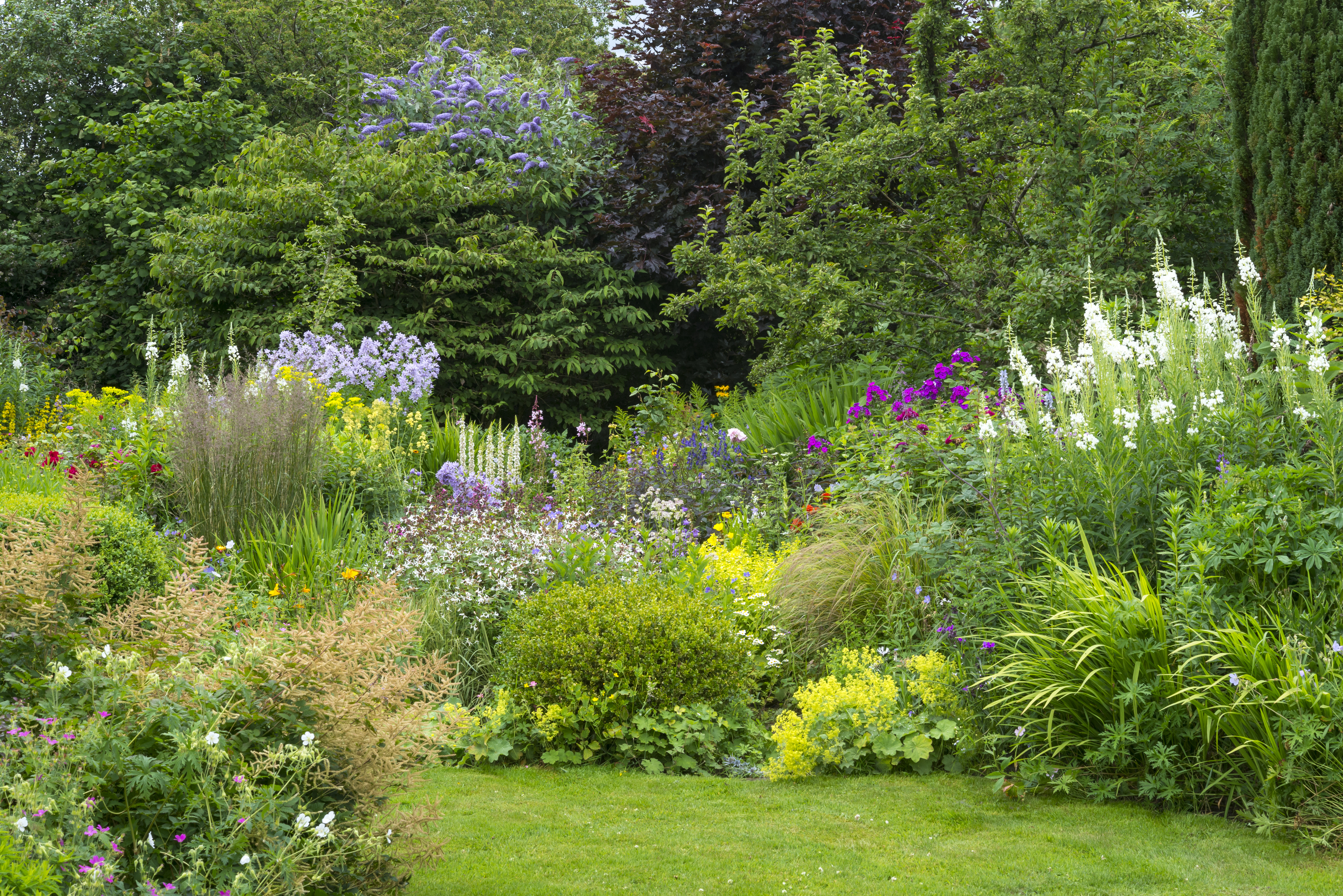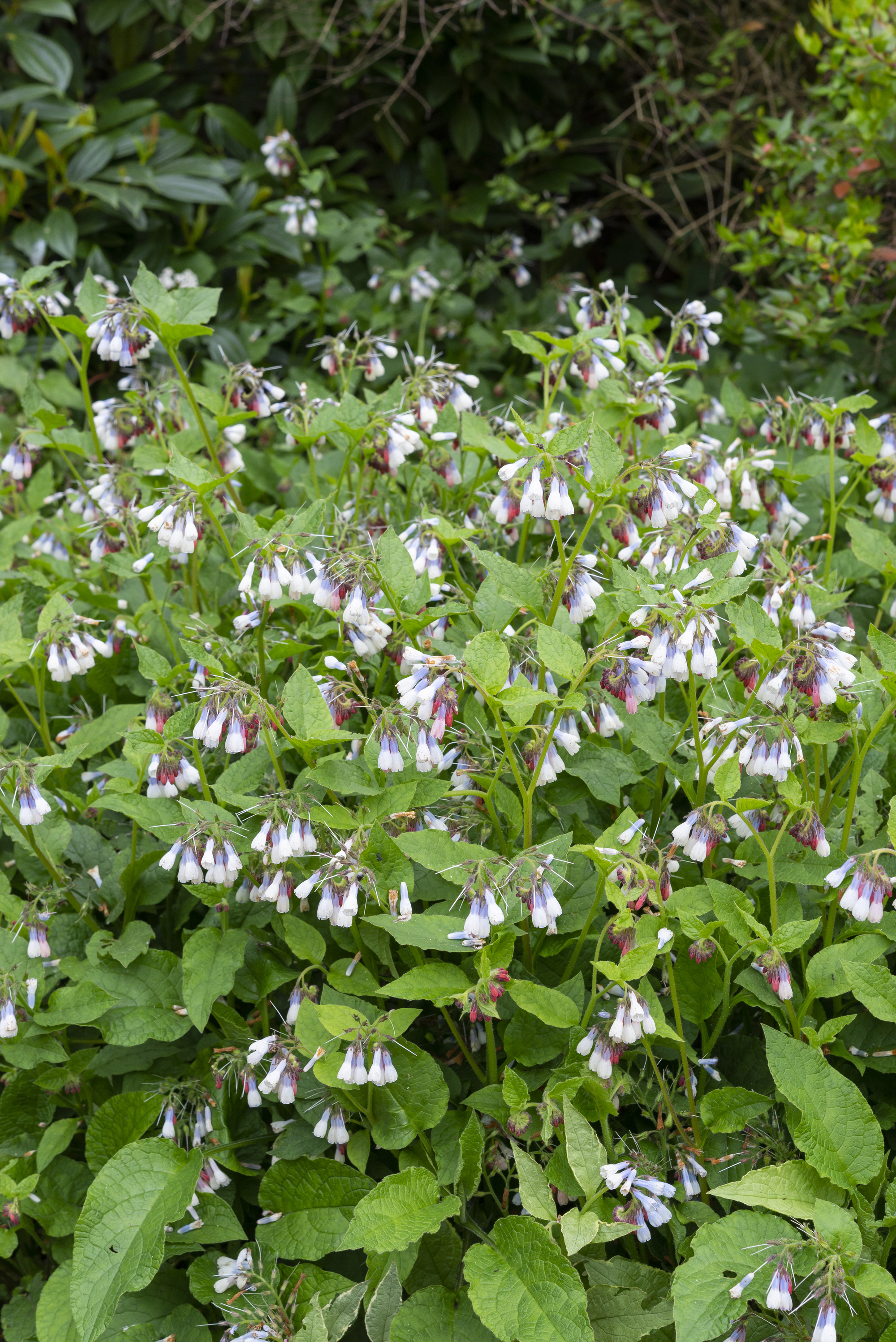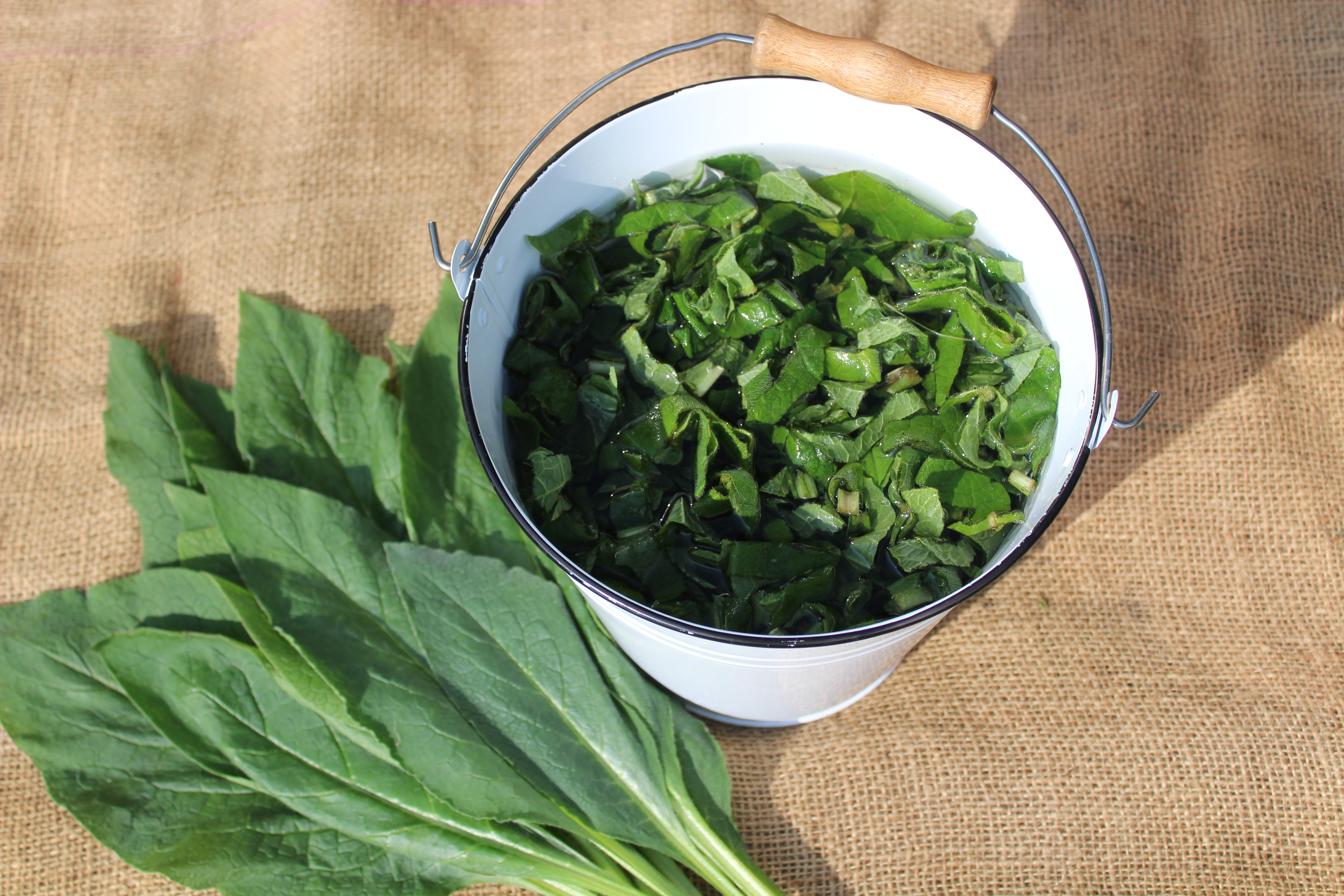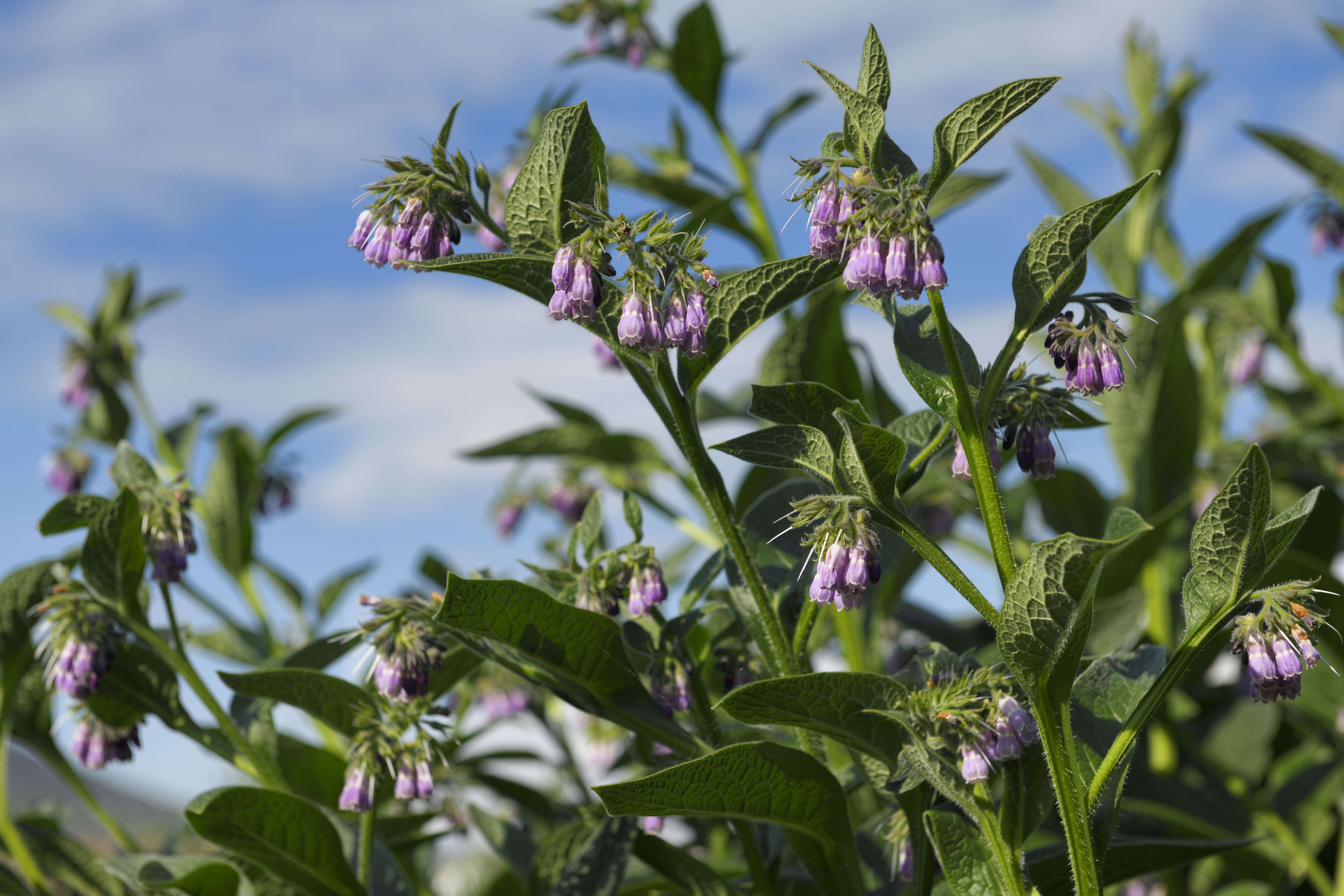
Looking for a more natural way to fertilize your plants? Comfrey tea is one of the most effective organic methods out there, and the staple ingredient could already be growing in your own garden.
Comfrey is a common weed with clusters of white or purple flowers and it's somewhat of a wonder plant when it comes to its uses. Not only are the leaves valued in gardening practices but the plant's roots, which are thought to have healing properties, have been used for medicinal purposes for centuries.
It's the wonderful powers it has when it comes to our plants that piqued our interest, though. Chemical fertilizers have their time and place, but if you want to give your backyard plants a more natural boost without having to even spend a penny, you can use comfrey leaves to brew a nutrient-rich feed that helps them thrive. Want to learn more? These experts explain all you need to know about making comfrey tea, including an even easier alternative that's kinder on the nose...
What is comfrey tea, and why is a good fertilizer?

Comfrey is a common plant that grows about two feet in height with a single flowering stalk and rounded, hairy green leaves. It's found throughout much of Europe, Asia, and North America where it's most abundant in hardiness zones 3-9, and in the wild it's typically found in forests, pastures, and banks of streams and rivers, but it likes to find its way into our gardens, too.
As far as weeds go, however, this one has its benefits. Comfrey can be brewed into a 'tea' which acts as a liquid fertilizer for your plants, whether houseplants or garden plants, thanks to its nutrient rich properties. 'It makes such a great fertilizer because it has deep roots that can reach minerals and nutrients other plants cannot access,' explains Reese L Robins, a gardening expert at Just Pure Gardening. 'It stores these nutrients in its leaves, which can be used to make mulch, compost, or liquid feed for other plants.'
The plant contains high levels of beneficial nutrients like nitrogen and phosphorus but it's especially rich in potassium, a mineral which helps many plants produce more flowers and fruits. 'The leaves of the comfrey plant also contain allantoin, a compound that helps stimulate cell growth and regeneration,' notes Lina Cowley, blogger and plant expert at Trimmed Roots.
How to make comfrey tea

So, clearly comfrey is one of the best ways to fertilize your plants naturally, but how do you use it? 'Comfrey tea is a liquid fertilizer made by steeping comfrey leaves in water,' explains Reese. 'To make it, you need comfrey leaves, a large bucket or container, a stone or brick to weigh down the leaves, and plastic bottles to store the liquid.' Here's a step-by-step guide on how to brew your own at home.
1. Harvest large comfrey leaves
Before you get started, you'll of course have to locate some comfrey. It prefers full sun and clay soil, so see if you can spot it growing in any flower beds or areas surrounding your home with these same conditions.
Once you've found some plants, be sure to pick the leaves using pruning shears and a pair of gardening gloves as the stiff hairs on the leaves and stems can easily irritate your skin. It's a fast-growing plant too, so don't be afraid to take a generous amount of leaves or cut the entire stem.
'Cut them up or shred them as you go to speed up the process,' says Reese. 'Then pack the leaves tightly into your container and use the stone or brick to press down the leaves.'
2. Pour water over the leaves
Just like making a cup of tea, it's now time to add water to fill the container. 'Pour it over the leaves until fully covered,' says Reese. 'Once full, cover the container with a lid or board to prevent rainwater from diluting the mixture and to contain the smell.'
3. Leave the mixture to brew

A good cup of tea is left to brew for a considerable length in order for it to infuse. The same goes when making your DIY fertilizer. 'Leave the mixture for fours to six weeks, mixing it every few weeks,' instructs Reese. 'The leaves will break down, and the liquid will become dark brown over time.'
Once your comfrey plant food has had time to seep, you can then pass the liquid through a strainer to gather the leftover stems and leaves. 'Pour the strained liquid into plastic bottles and store them in a cool, dark place,' Reese says. 'The solid material can then be used as compost to benefit your landscaping ideas.'
4. Dilute the liquid fertilizer with water
You might think you're job is done, but the neat comfrey tea solution you've made will actually be too rich in nutrients to be used on your plants alone. 'Dilute the liquid at a rate of one part comfrey tea to 10 parts water before using it as a fertilizer,' Reese notes. 'The darker the liquid is, the more concentrated it will be, so adjust accordingly.'
It's best to do this straight into a watering can, adding a small amount of your organic fertilizer to the bottom before filling it with water straight from the tap. You can then use the solution to water your plants as normal. (Early morning or late evening is the best time to water your garden to reduce water evaporation.)
Or, use raw comfrey leaves in the bottom of your planters

Making comfrey tea is simple enough, but these instructions shouldn't go without a word of warning: the smell of this organic home brew really isn't pleasant. Luckily though, if you want to spare your nose the smell of rotting food, you can use raw comfrey leaves in the bottom of your planters when you're container gardening.
'Simply layer fresh comfrey leaves at the bottom of your potted plants,' says Lina. 'As the leaves break down, they will release nutrients into the soil and promote healthy plant growth. Just be warned, even the smell of decomposing comfrey leaves can be quite pungent, so this may not be the best option for indoor plants.'
'You should also ensure not to cover the bottom holes of the pots with the leaves as this can block drainage and cause waterlogging or root rot,' adds Reese.
How do you apply comfrey tea to your plants?
Once you've diluted your comfrey tea solution, the best way to apply it is with a regular watering can when dealing with outdoor plants, or a mister or small jug for houseplants. You should take care to only apply the liquid solution to your plant's soil, though, rather than the leaves as it can burn the foliage.
'You can use comfrey tea as a potassium-rich fertilizer to encourage flowers and fruits in a range of plants, such as tomatoes, peppers, cucumbers, squash, berries, and many more,' says Reese. 'Apply the diluted tea directly to the soil around the plants every 2-3 weeks during the growing season.'
The fertilizer can then be used on pretty much all of your plants, although it's important to avoid it on any young or unestablished plants as they can be more sensitive to the concentration of nutrients. 'You should also avoid using it on plants that prefer acidic soil, such as blueberries, cranberries, and rhododendrons,' says Lina. 'This is because comfrey tea has a high pH level and can raise the soil's acidity and harm these plants.'







